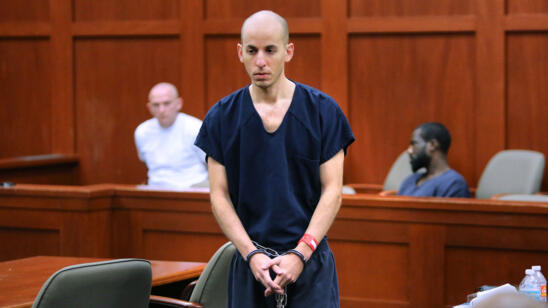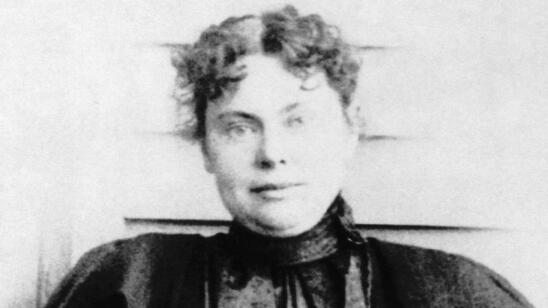A little after 4 a.m. on November 13, 2022, four University of Idaho students were stabbed to death in the college town of Moscow, Idaho (population 25,000). The victims—Kaylee Goncalves, 21; Madison Mogen, 21; Xana Kernodle, 20, and Ethan Chapin, 20—were killed in an off-campus rented house. The three women were tenants there; Chapin had been staying with Kernodle, his girlfriend. Two other female students who lived in the house were not attacked.
The horror of the crimes, the victims’ youth and the peaceful setting—there had been no recorded murders in Moscow since 2015—quickly drew intense public interest. Questions about the case included: Why were these students killed? When would police find the murderer?
J. Reuben Appelman, a writer and private investigator who lives in Idaho, spoke to A&E True Crime about his book, While Idaho Slept, which examines an investigation that led to a suspect’s arrest just six weeks after the murders. Appelman also explores the victims’ lives before they were cut short.
These murders shocked Idaho, the country and the world. Could you talk about why they attracted such attention?
My daughter went to the University of Idaho. I’ve worked up in Moscow as an investigator. I’m very familiar with that part of the state and the people there. I have mutual friends with some of the victims, mutual friends with some of the survivors. [The murders] hit home.
The international attention on this case seemed very clearly driven by social media. I think it started with people, college students, who felt like these victims were mirrors of themselves. It seemed like something they related to instantly and were terrified by instantly.
Then it exploded in all demographics, from teenagers to 70 year olds. We had to face the real terror of a stranger entering a home in the middle of the night and slashing people. That’s everybody’s worst nightmare. You cannot prepare for somebody ambushing you. And I think that terror drove the traffic around this case.
There hadn’t been a murder in Moscow for years before this case. Did the police force’s lack of experience in handling homicide cases affect the investigation in any way?
[Moscow Police] Chief [James] Fry, the head of this investigation, is not what the national news painted him as—a ‘get your biscuit at the coffee shop’ kind of guy. He has had training with the FBI. In this case, the lack of logistical resources [in the town of Moscow’s police department] was made up for by the fact that the Idaho State Police and the FBI were brought in immediately.
In some ways, the rarity of this type of crime in north Idaho is what led to Chief Fry putting everything he has into this case. I could say that Fry cared about this case as if it were his nieces and a nephew that had been murdered. There’s not a doubt in my mind that the trauma of this happening to his own people is what led to diligent, consistent work.
Your book mentions the self-appointed detectives who speculated about the case on social media. What impact did they have on the investigation?
Thousands of armchair investigators glommed onto this case. It was both helpful and, at times, detrimental. In some ways, they pushed the local police department to be more open about how the official investigation was going. Family members of the victims would listen to what online investigators were saying. Then they would bring questions or demands to the local police department.
When you have social media personalities who know what they’re doing pointing out things to be looked at, or working in collaboration with police departments to mine social media, that can be really helpful. On the other hand, social media mobs dogpiled onto complete strangers [in] this case, sometimes based on their appearances, or their habits or their criminal background. A professor was driven underground with her family. Friends of the victims were driven into hiding.
Police should not have to get in front of the press corps and say, ‘So-and-so didn’t do this.’ They should be diligently keeping their noses to the grindstone, not answering to people with no investigative prowess.
You show who Maddie, Kaylee, Ethan and Xana were before their murders. Is there anything that sticks out in your mind about these four young people?
What I found is all four of these students appeared well-loved. They were just great people to be around. They had great love for each other. No matter where I looked, I didn’t find anything disparaging about any of them. I didn’t find anything that would make an investigator feel that they were at all culpable in their demise.
It hurts to think of them suffering this type of fate because they’re so similar to what we want for our own kids, or what we would want for ourselves if we could do it over again. It felt like these were beautiful people who had big hearts for each other, and somebody came in and slashed at those hearts.
Related Features:
The Gruesome 1960s Campus Murder That America Forgot
How the Mysterious Murders of Two Girls in Delphi, Indiana Affected a Community
The Unsolved Rainbow Murders: What Happened to Vicki Durian and Nancy Santomero?


